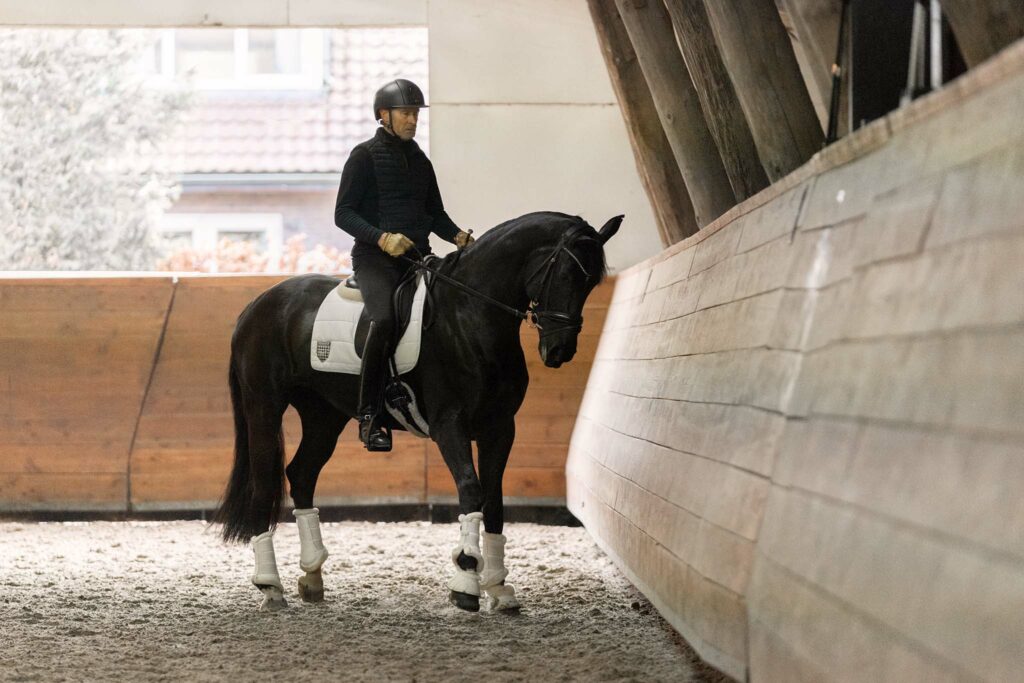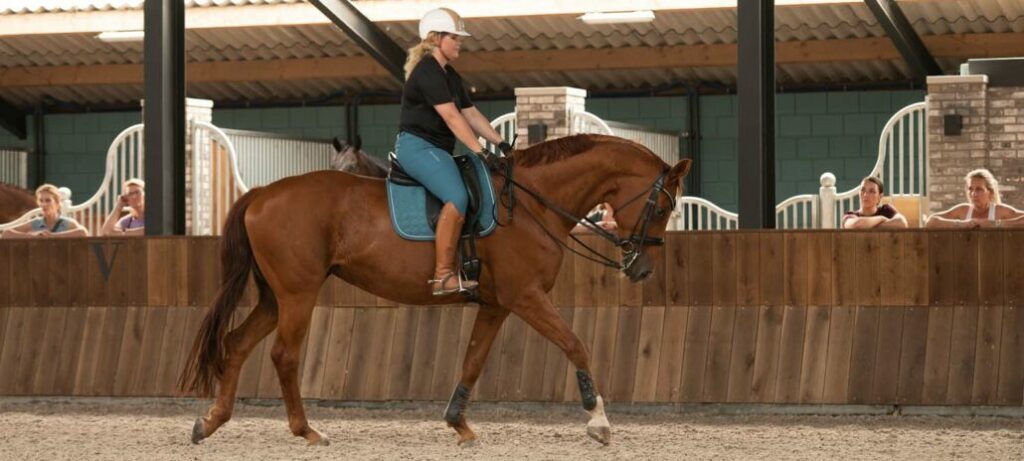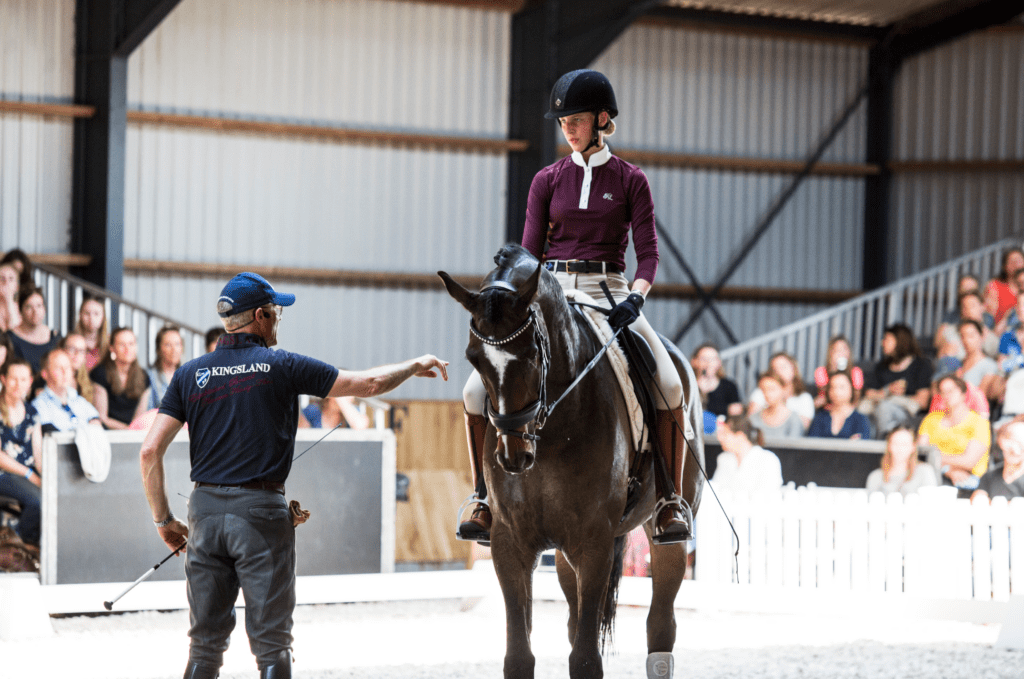Perhaps you’ve heard this phrase before:
If your horse is ‘lazy’, then you have to ride a lot of transitions within the gait.
Then he will react better to your leg aids and become more active. But is that really the case?
Transitions within the gait means riding forward and also taking back the pace.
If you take back pace, it is already a challenge to keep the hind leg active.
And if the hind leg is already not active, then you can be sure that your horse will fall apart completely.
The goal from riding transitions within the gait
Transitions within the gait are very effective when it comes to activating the hind legs and getting the hind legs to carry more weight.
But to do this the right way, there are a few principles that you should keep in mind, no matter at which level you’re riding.

The conditions for good transitions within the gait
Transitions within the gait only make sense:
- if you have the three basic conditions in place, especially forwardness
- if you have tempo control
#1 Have the three basic principles in place
Transitions within the gait only make sense if your horse is forward, relaxed and accepts the hand. If you have those three things confirmed, you can start to ride your transitions within the gait to improve your horse.
But don’t ride transitions to improve your principles, because:
If your horse isn’t forward enough, riding transitions won’t benefit him and he might even get lazier.
So by riding transitions within the gait, your horse won’t get more forward.
Riding transitions within the gait with a horse that lacks forwardness will ensure that your horse all the time thinks: “when can I slow down again? “
Please ensure that you have enough forwardness and impulsion before you ride a
transition with the aim to improve your horse.
And when we say forward, we don’t mean fast. It means the energy that’s in your horse that wants to go forward, or in other words, the impulsion or activity.
#2 Have speed control
To be able to ride transitions (within the gait), of course, you need to have control over the tempo. But, according to Rien, you have to pay attention to the following:
You don't make your horse forward with transitions within the gait
It’s important that you ride the transitions and changed of speed in the correct manner, because if you don’t… the exercise has no purpose and won’t benefit your horse. In other words, it won’t have a positive influence on the balance of your horse.
Riding tempo changes and transitions can therefore have a very positive influence on the balance of your horse. You can make your horse carry more weight on the hind legs.
But you have to make sure you meet all the conditions.
When you horse is not forward, first fix this by being consequent with you leg aids. And make sure you don’t ride your horse in a position by working back with your hand.
You have to give your horse the possibility to go forward. By riding your horse in a position
where you are working back with your hand, you are actually giving a braking aid
with your hand.



4 Responses
Wenn my, young,horse is not moving forward at the trot, usually at the start of the warm-up, I make transitions to the walk and back , this seems to help, also with lunging.
Not at a high pace. Let him walk for about 10 steps and then go back to the trot.
Heel helder uitgelegd! Zo fijn om te horen dat het paard eerst voorwaarts moet gaan. En de hand voor je uit en niet terug trekken. Super. Ga vooral door Rien met deze filmpjes. Elke ruiter zou ze moeten bekijken😃
When do you come to Sweden and how can I apply to ride lessons for you? I have icelandichorses 😍
Stephen peters teaches to apply the driving aids and get a response for about six strides then relax but don’t take back, but the horse will naturally ease back. Then you can ask for six more active response strides. This way you avoid the taking back and improperly queuing the horse to drop his hind end out behind him.
Walter Zettl always had riders work on make a horse’s strides a little bit longer a little bit longer, until the horse was maximized in his ability to reach, and then you would work on making him a little shorter and a little shorter until you had the hind leg, reaching up and down. Then by playing between those two extremes Eventually, you could have both stride length and amplitude. I don’t think you really want to mess with tempo and make the horse simply quicker in his feet.